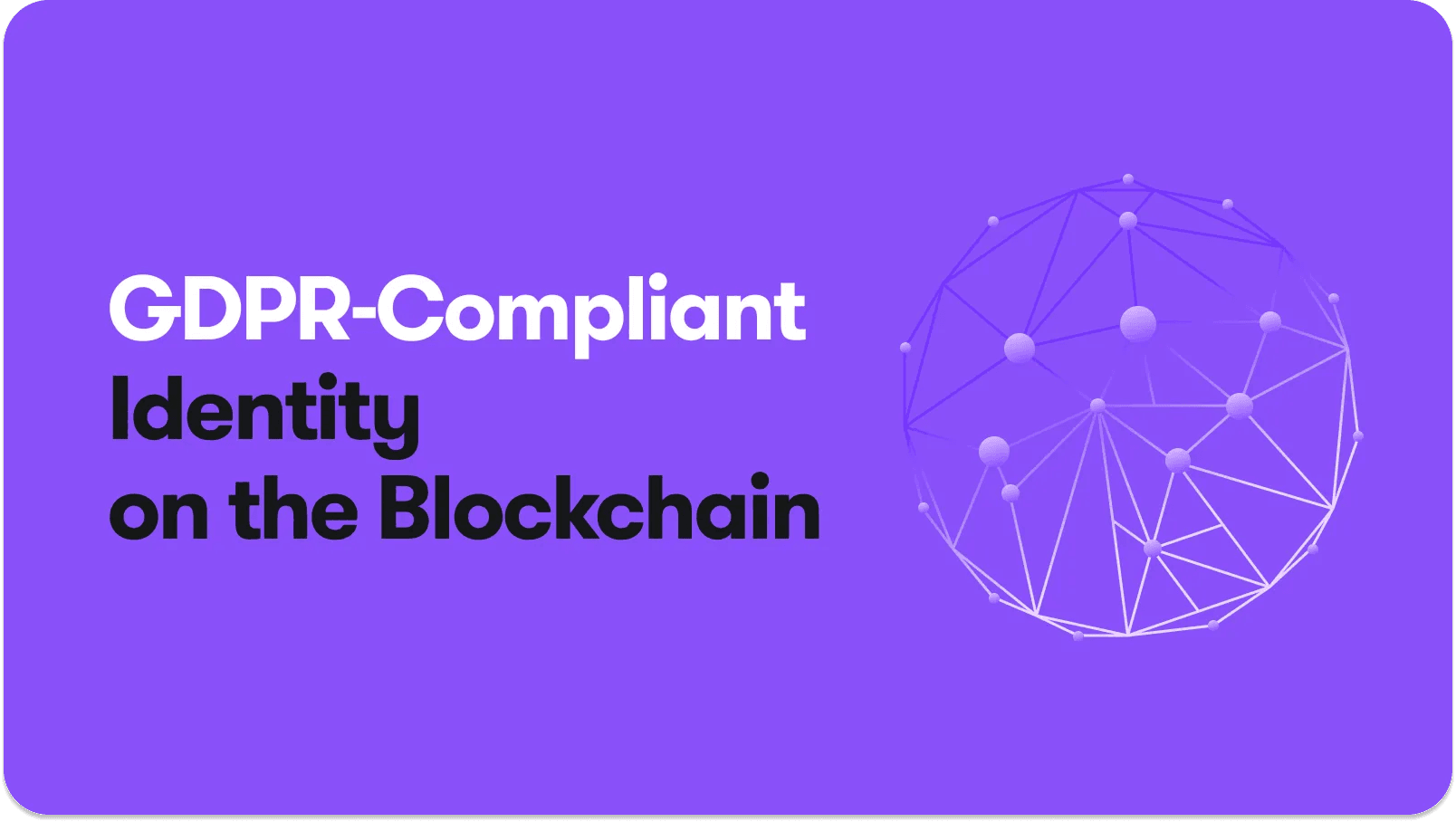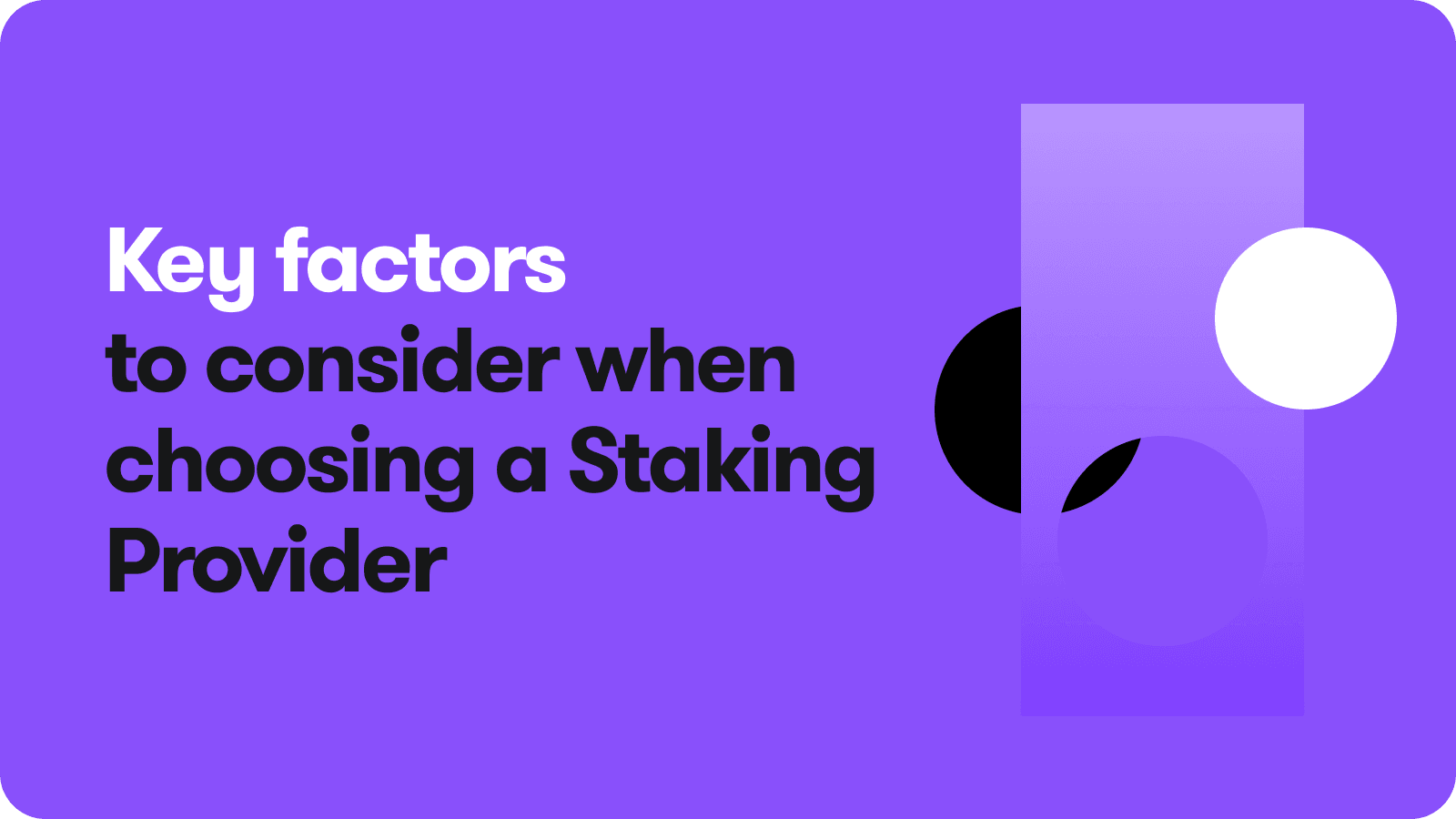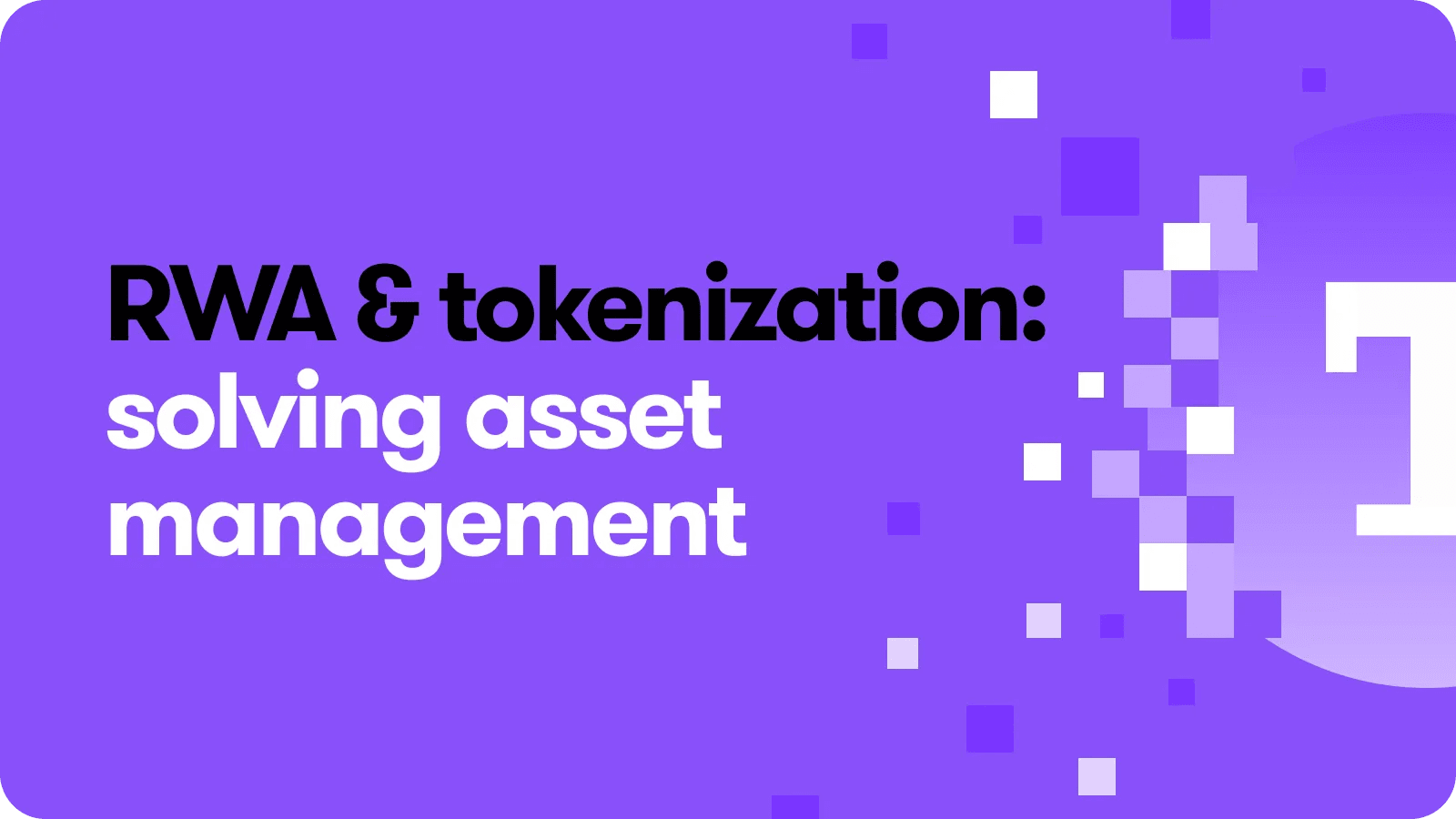
GDPR-Compliant Identity on the Blockchain
1 July 2025Blockchain-based systems offer solid advantages, such as decentralization, transparency, and resistance to tampering - traits that make them ideal for trustless environments. However, these core features often conflict with identity regulations due to the way blockchain handles data storage and privacy.
In particular, regulations like the General Data Protection Regulation (GDPR) require user data to be:
Accurate
Controllable by the user
Deletable (upon request)
Protected by design
Most public blockchains, such as Ethereum, store user data in an accurate and secure format. However, theimmutability of these systems makes it impossible to alter or delete any records once written.
Is there a way to reconcile immutable decentralized systems with the dynamic requirements of personal data rights?
Yes, such a method exists. Decentralized Identifiers (DIDs) and Zero-Knowledge Proofs (ZKPs)offer a solution. These tools enable frameworks where users control their identity, consent is cryptographically enforced, and systems can verify credentials without violating privacy.
Identity on Blockchain: The Problem
Storing user identity or even identifiers (e.g., email, username, KYC hash) directly on-chain can violate GDPR for several reasons:
Blockchain is immutable.
GDPR grants the “right to be forgotten,” meaning users should always have the option to delete their data upon request. With on-chain solutions, it is impossible to delete any data once it’s recorded on the network.Blockchain is transparent.
GDPR requires collecting only the minimum necessary data and using it for specific, declared purposes. Public blockchains usually store entire transaction histories, which may include more information than necessary and even allow tracking down transactions to real individuals.Blockchain violates users’ rights.
Storing data on-chain also makes it difficult to uphold rights required by GDPR, such as rectification, erasure, and purpose limitation. Once again, the immutability of the blockchain is to blame for that.
Placing personal identifiers on-chain poses a risk to sensitive data, making it permanent and uncontrollable for end-users, which directly contradicts GDPR requirements.
Decentralized Identifiers (DIDs): A GDPR-Friendly Solution
How can businesses implement blockchain-based solutions while still protecting user's data? Decentralized Identifiers offer a way to give users full control over their digital identities without relying on a central authority.
What is a DID?
A Decentralized Identifier (DID) is a unique, self-managed digital reference that enables individuals, organizations, or devices to establish their identity without relying on a central authority. It functions like a digital passport and has the following characteristics:
Self-sovereign:Users generate, own, and control their identities without intermediaries. They can update or deactivate their DIDs independently, ensuring full control.
Decentralized: Unlike traditional identifiers (emails, passports), DIDs live on decentralized networks. This eliminates single points of failure and reduces censorship risk, enhancing both privacy and security.
Cryptographically verifiable: DIDs use public-private key pairs to authenticate identity securely.
DIDs may include verification methods that specify how the public keys are to be used (e.g., for authentication or access). They also may cover service endpoints, defining how other parties can interact with a given identity. Such flexibility makes them suitable for both end-users and whole organizations.
Why DIDs Are GDPR-Compatible
DIDs are inherently privacy-preserving. This means that they do not contain any personally identifiable information (PII) such as names, emails, or ID numbers. Instead, blockchains using DID systems store only:
DID strings (non-identifying)
Cryptographic hashes
References (e.g., links to off-chain data)
This means PII is never exposed on-chain, making DID-based systems naturally aligned with GDPR. By using only anonymous references, users keep their privacy while enjoying secure interaction with decentralized systems.
| GDPR Requirement | DID Support |
| User control | DIDs are self-owned, not issued by a central provider |
| Data minimization | Identifiers can be used without revealing PII |
| Right to erasure | DID documents can be deactivated or rotated (off-chain updates) |
| Consent | Credential sharing is user-initiated via wallets |
| Portability | DIDs can be used across platforms and networks |
Verifiable Credentials: Trust Without Exposure
DIDs become truly powerful when combined with Verifiable Credentials (VCs). While DIDs provide a decentralized and user-controlled identity anchor, VCs come in the form of meaningful identity claims linked to this anchor, such as:
“This user is over 18.”
“This user has completed KYC.”
“This user is a DAO contributor.”
Trusted entities, such as KYC providers or universities, issue VCs. The issuer digitally signs VCs and sends them to the user. These credentials are digitally signed and sent to the user, who stores them securely in their own encrypted, off-chain wallet.
When needed, the user can generate a Zero-Knowledge Proof (ZKP) to prove eligibility (e.g., age, membership) without revealing their full credential or any sensitive data.
Such an approach is GDPR-compliant for the following reasons:
User consent and control: Users decide what to share and with whom, unlike traditional logins that automatically send PII.
Data minimization: VCs disclose only essential attributes.
Right to be forgotten: Users can revoke credentials at any time.
Auditable consent: All transactions are cryptographically signed and timestamped, providing a verifiable trail of consent and data use.
Thus, DIDs give users both security and control over their digital identity. Combined with VCs, they enable a privacy-first, GDPR-aligned identity framework secured by blockchain.
Zero-Knowledge Identity Proofs
In cryptography, Zero-Knowledge Proofs (ZKPs) allow someone to prove that a statement is true without revealing any actual information behind that statement. For example, you can prove you’re over 18 without showing your ID.
Here’s how they work. Instead of verifying a user’s identity directly, the ZK system can verify:
Whether the user belongs to a specific group (e.g., DAO members, verified citizens)
Whether the user has permission for certain actions
Whether the credential is valid and unrevoked.
None of this requires exposing the user’s actual DID or the contents of their credential. This makes ZKPs especially powerful in decentralized identity systems.
Advantages of ZKPs
The benefits of such an approach are substantial:
Eliminates PII exposure: Verifiers never access personal data, reducing the risk of leaks.
Reduces re-identification risk: Since credentials and identifiers aren’t shared, linking user activity across platforms becomes impossible.
Removes regulatory burden: Verifiers don’t process or store personal data, easing GDPR compliance and reducing legal liability in the event of data audits or regulatory inquiries.
Example Workflow: GDPR-Compatible Identity Verification
Let’s review the process of a typical privacy-oriented identification that stays compliant with GDPR requirements:
User Registers and Creates Identity
The system generates a decentralized identifier with a unique identity anchor owned by the user. A trusted issuer, such as a KYC provider or government, verifies, issues, and signs a verifiable credential. The VC is handed over to the user, who stores it securely in a personal wallet.User Interacts with a dApp or Service
When users need to prove their eligibility (e.g., to access age-restricted content), they don’t share their VC directly. Instead, they generate a ZKP that proves specific facts without revealing the underlying credentials.A Smart Contract Verifies Proof
The contract checks the zkProof on-chain and validates its authenticity without accessing any real data.Ongoing User Control over Their Data
Users are free to manage their own data without having to deal with any third party. They can revoke their credentials, rotate or deactivate their DID in case it is compromised, or delete their wallet, removing access to all their personal data and private keys.
Such a workflow ensures that users remain in full control over their identities and credentials. Platforms, in turn, stay compliant with GDPR, as they don’t need to collect, process, or store any personal data.
Best Practices for Developers
✅ Never store PII on-chain.
✅ Use off-chain storage with hash-based references.
✅ Use W3C-compliant DID and VC standards.
✅ Let users manage their credentials in a secure wallet.
✅ Use ZKPs for selective disclosure and access control.
✅ Keep an up-to-date consent ledger for auditability.
Conclusion
A blockchain identity system that’s user-centric, cryptographically verifiable, and privacy-preserving is not just desirable - it’s necessary. Decentralized identity solutions offer a future-proof foundation for data security that aligns with privacy standards like GDPR and individual privacy expectations.
By leveraging DIDs and ZKPs, we can meet these expectations, uphold regulatory requirements like GDPR, and unlock the next generation of secure, interoperable Web3 applications. Thus, blockchain offers the next generation of secure, privacy-first, and interoperable Web3 applications.
In this new model, identity is no longer a central bottleneck - it’s a decentralized right.
Want to Build It?
Looking for a team of experts in blockchain-based and GDPR-compliant solutions? We are here to help build frameworks and tools for:
DID issuance + storage
Zk-based role verification
on-chain access control using zkProofs.
Reach out if you’d like to collaborate or integrate this into your protocol.
Other blog posts
Want to read more? Discover our other articles below!



